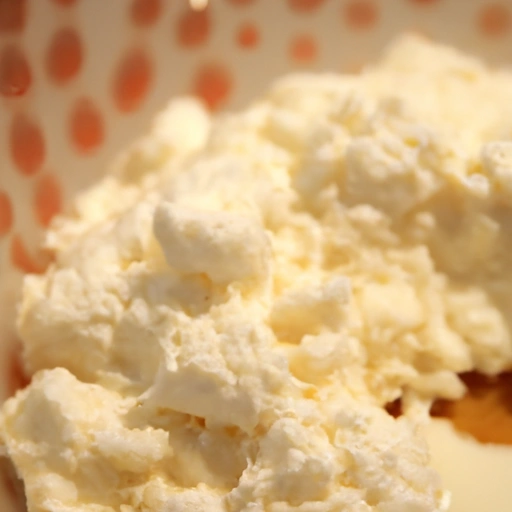Curd
Description

Curd is a dairy product obtained by curdling milk with a natural acidic substance such as lemon juice or vinegar, or by the addition of bacterial cultures. This process results in the separation of the milk into solid curds and liquid whey. Curd has a thick, creamy texture and a slightly tangy flavor, making it a popular ingredient in various cuisines. It is commonly used in both sweet and savory dishes, and can be found in different forms around the world, including quark in Europe, dahi in South Asia, and cottage cheese in America.
Common uses
Curd is widely used in a variety of dishes including dips, spreads, salads, desserts, and as a garnish. It can also be consumed on its own, often flavored with spices or sweeteners. Due to its probiotic content, curd is frequently included in health-focused diets and is recommended for good digestive health.
Nutritional value
Calories
Typically, 100 grams of curd contains approximately 98 kcal (410 kJ).
Protein
Curd is rich in protein, offering about 11 g per 100 grams.
Fat
The fat content in curd can vary, but on average there is around 4.3 g of fat per 100 grams.
Carbohydrates
Curd contains about 3.4 g of carbohydrates per 100 grams.
Vitamins
Curd is a good source of vitamins, particularly B-complex vitamins and vitamin A.
Minerals
It provides essential minerals such as calcium and phosphorus, with 150 mg of calcium and 110 mg of phosphorus per 100 grams.
Health benefits
Curd is known for its health benefits including improving digestion, boosting immunity, and promoting bone health due to its high calcium content. The presence of probiotics in curd helps maintain healthy gut flora and can aid in the prevention of gastrointestinal conditions.
Potential risks
While curd is generally safe for consumption, it is a dairy product and can cause adverse reactions in individuals with lactose intolerance or a dairy allergy. Overconsumption may also lead to issues in individuals with a sensitivity to high-fat foods or those managing their caloric intake.
Common recipes
Curd is used in a variety of recipes such as cheesecakes, smoothies, curd rice, lassi, and tzatziki sauce.
Cooking methods
It can be eaten raw or used in baked goods, as a topping for pancakes or waffles, and even in marination processes for meats.
Pairing with other ingredients
Curd pairs well with fresh fruits, honey, nuts, herbs, and spices like cumin and coriander, offering versatility in culinary applications.
Summary
As a versatile and nutritious ingredient, curd has been a staple in global cuisines for centuries. It's not only cherished for its distinct flavor and texture but also for the numerous health benefits it offers. With the ability to adapt to various recipes and cooking methods, curd continues to be a beloved ingredient in kitchens around the world.